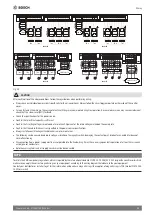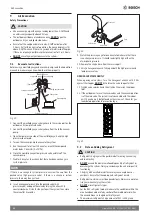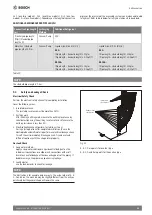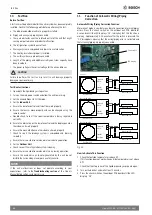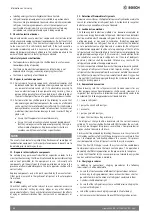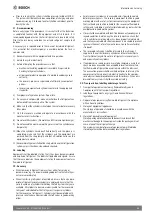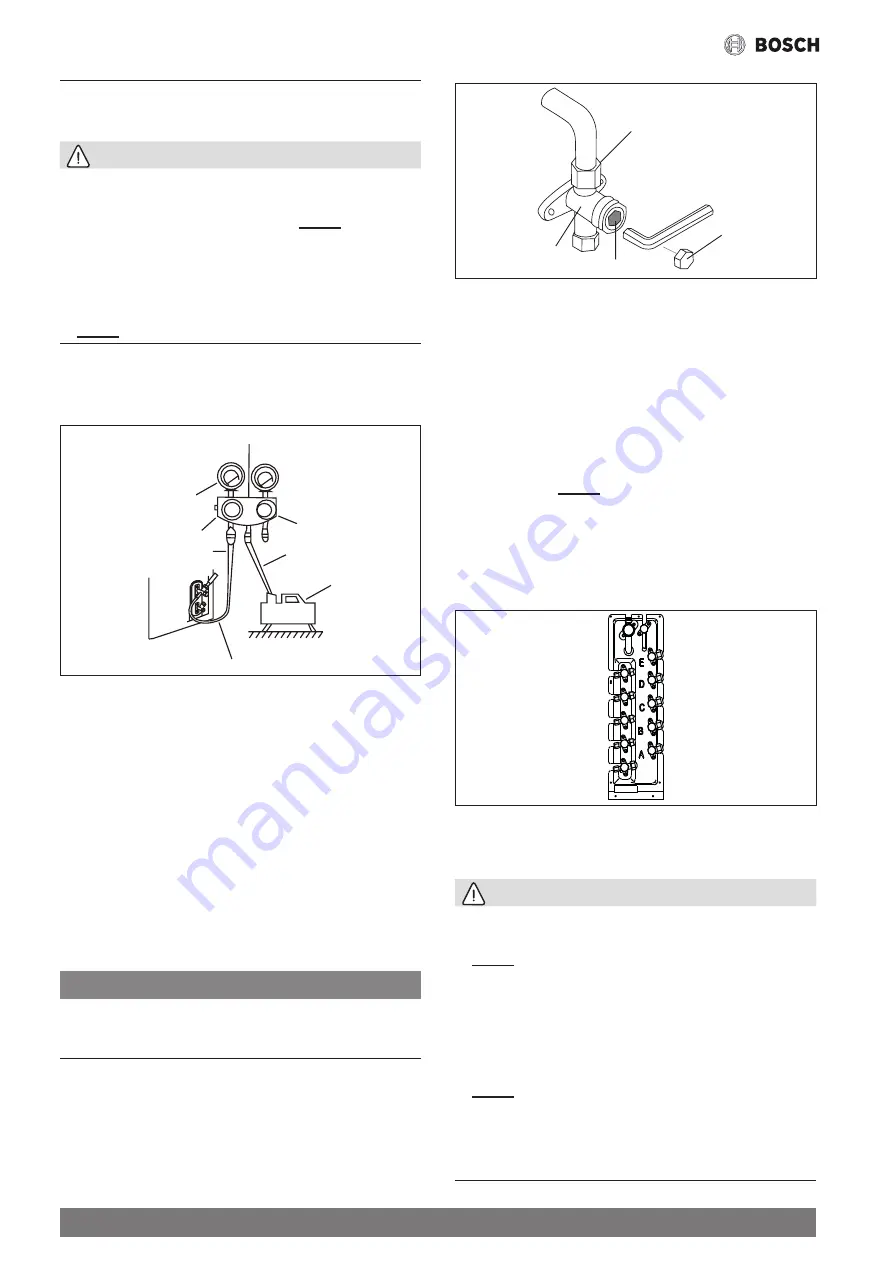
18
Climate 5000 MS – 6720887246 (2018/04)
Air Evacuation
9
Air Evacuation
Safety Precautions
CAUTION
•
Use a vacuum pump with a gauge reading lower than -0.1MPa and
an air discharge capacity above 40L/min.
•
The outdoor unit does not need vacuuming.
DO NOT
open the
outdoor unit’s gas and liquid stop valves.
•
Ensure that the compound meter reads -0.1MPa or below after
2 hours. If after three hours of operation, the gauge reading is still
above -0.1MPa, check if there is a gas leak or water inside the pipe.
If there is no leakage, perform another evacuation for 1 or 2 hours.
•
DO NOT
use refrigerant gas to evacuate the system.
9.1
Evacuate Instructions
Before using a manifold gauge and a vacuum pump, read their operation
manuals to make sure you know how to use them properly.
High pressure valve
Pressure gauge
Charge hose
Vacuum pump
Low pressure valve
-76cmHg
Low pressure valve
Charge hose
Compound gauge
Manifold Gauge
Fig. 29.
1. Connect the manifold gauge’s charge hose to the service port on the
outdoor unit’s low pressure valve.
2. Connect the manifold gauge’s charge hose from the to the vacuum
pump.
3. Open the low pressure side of the manifold gauge. Keep the high
pressure side closed.
4. Turn on the vacuum pump to evacuate the system.
5. Run the vacuum for at least 15 minutes, or until the compound
meter reads -76 cmHG (-1x10
5
Pa).
6. Close the manifold gauge’s low pressure valve and turn off the
vacuum pump.
7. Wait for 5 minutes, then check that there has been no change in
system pressure.
NOTE:
If there is no change in system pressure, unscrew the cap from the
packed valve (high pressure valve). If there is a change in system
pressure, there may be a gas leak.
8. Insert a hexagonal wrench into the packed valve (high
pressure valve) and open the valve by turning the wrench 1/4
counterclockwise. Listen for the gas to exit the system, then close
the valve after 5 seconds.
Flare nut
Valve body
Valve stem
Cap
Fig. 30.
9. Watch the pressure gauge for one minute to make sure that there
is no change in pressure. It should read slightly higher than the
atmospheric pressure.
10. Remove the charge hose from the service port.
11. Using a hexagonal wrench, fully open both the high pressure and
low pressure valves.
OPEN VALVE STEMS GENTLY
When opening valve stems, turn the hexagonal wrench until it hits
against the stopper.
DO NOT
try to force the valve to open further.
12. Tighten valve caps by hand, then tighten them using the proper
tool.
13. If the outdoor unit uses all vacuum valves, and the vacuum position
is at the main valve, the system is not connected with the indoor
unit. The valve must be tightened with a screw nut. Check for gas
leaks before operation to prevent leakage.
Fig. 31.
9.2
Note on Adding Refrigerant
CAUTION
•
Refrigerant charging must be performed after wiring, vacuuming,
and leak testing.
•
DO NOT
exceed the maximum allowable quantity of refrigerant or
overcharge the system. Doing so can damage the unit or impact its
functioning.
•
Charging with unsuitable substances may cause explosions or
accidents. Ensure that the appropriate refrigerant is used.
•
Refrigerant containers must be opened slowly. Always use a protec-
tive gear when charging the system.
•
DO NOT
mix refrigerants types.
•
For the R32 refrigerant model, make sure the conditions within the
area have been made safe by control of flammable material when
the air conditioner is charged with refrigerant.
•
The maximum refrigerant charge amount of R32 is 305 grams.














